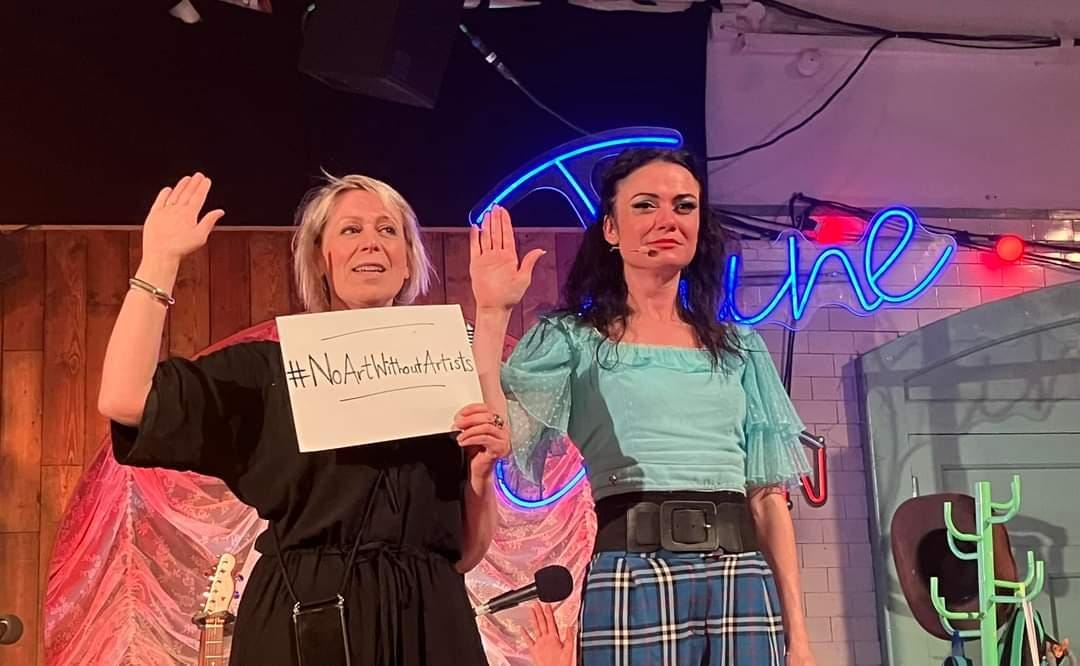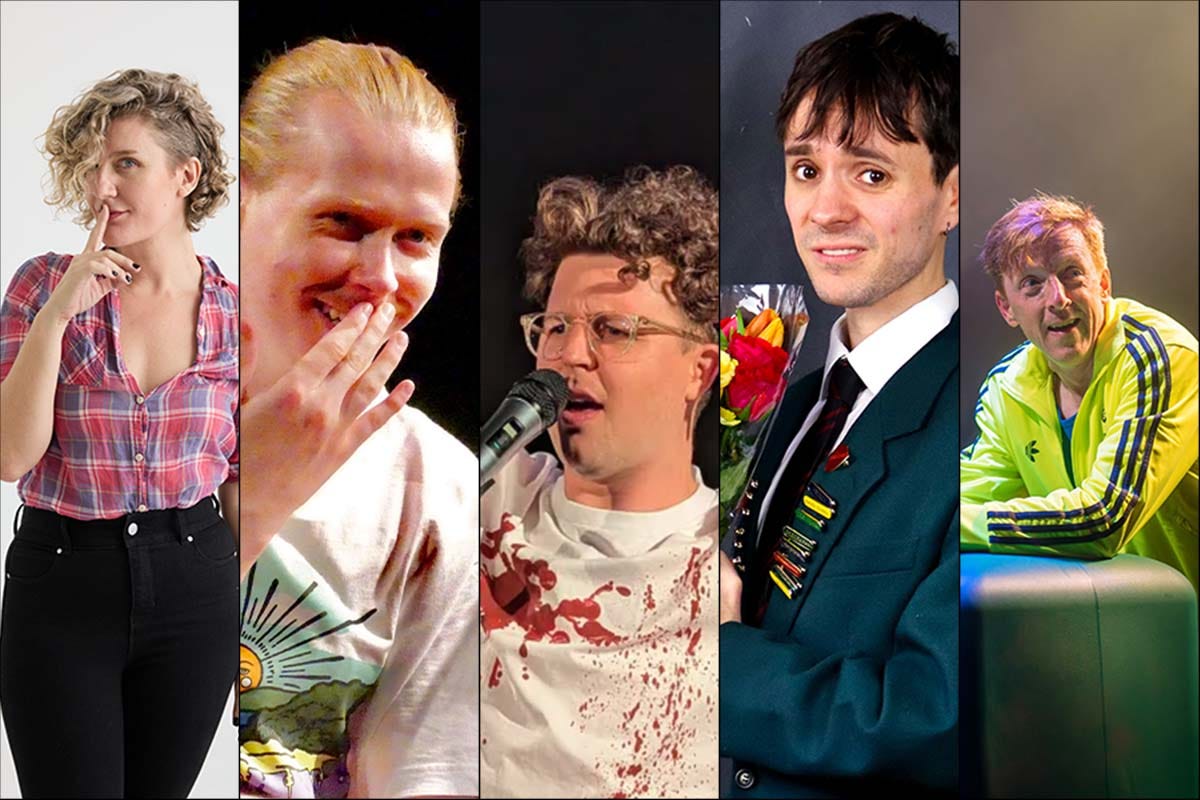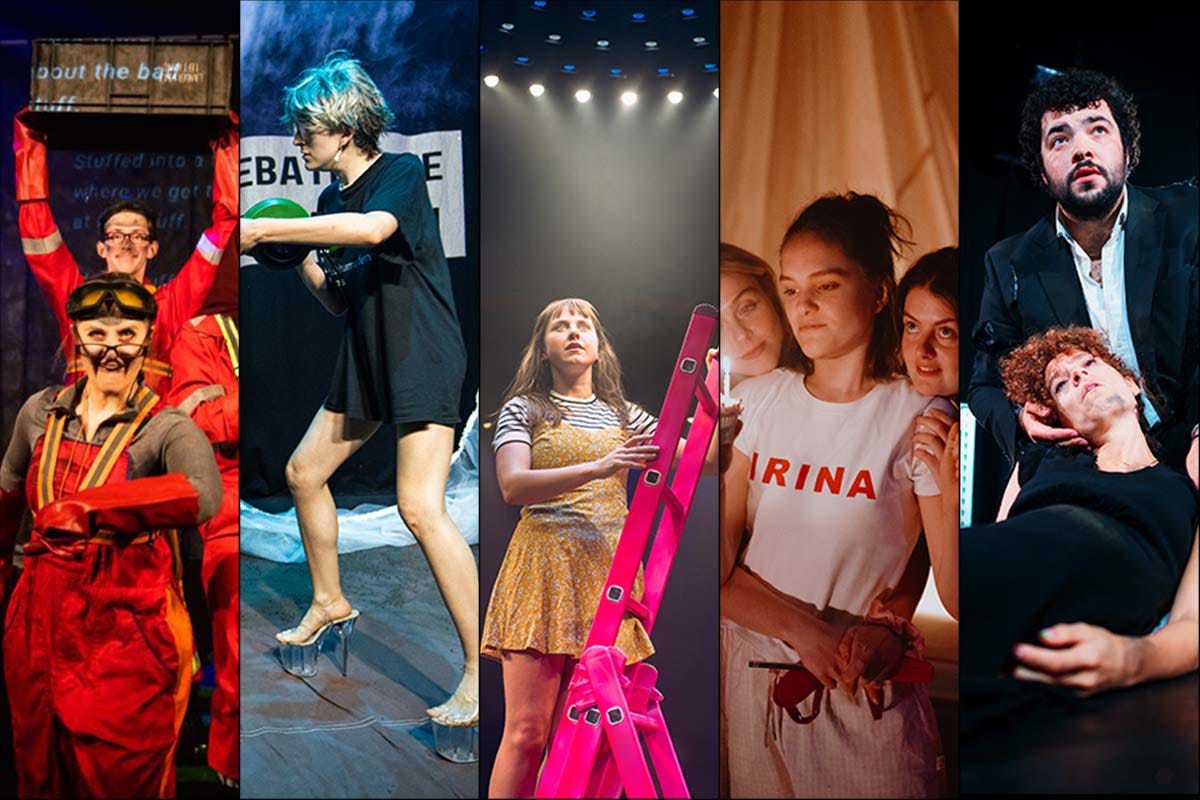Five final reflections on this year's Edinburgh Fringe
How should we measure success? Were there any stand-out shows? Has it all become less artistically risky because it is so expensive? Plus: news and reviews on the festival elsewhere.
Hello, and welcome to The Crush Bar, a Substack about theatre written by me, Fergus Morgan.
This newsletter is the twelfth and final in a series on the Edinburgh Fringe, which ended on Monday. It features one last round-up of news from the festival, then some reflections from me.
There is a couple of things you can do to help me keep this newsletter and its coverage of fringe theatre going. Firstly, you can share it far and wide, forward it to anyone you think might be interested, and encourage them to subscribe. And secondly, you can become a paid supporter of The Crush Bar - it’s £50/year or £5/month - via the button below. Thanks.
The festival is finished…
A whole bunch of awards were given out over the last few days of the festival, including a final round of Fringe Firsts, a final round of “Besties” and the inaugural List Magazine Awards. You can find all the winners here in The Stage.
The Stage also announced its Fringe Five - five artists or companies that made a massive impact at this year’s festival. They are: Virginia Gay, Salty Brine, Chuang Po-Hsiang, Ugly Bucket Theatre, and Emma Jude Harris. You can read more here.
The final week of the festival was overshadowed by Creative Scotland’s announcement that it had been forced to close its Open Fund for Individuals - one of its key funds - because the Scottish government was not releasing £6.6m as it had promised to. Scottish shows at the festival staged protests in response. You can read more about the situation here and more about the protests here.
The festival officially closed on Monday, with 2.61 million tickets sold to 3746 shows, making it the fourth biggest event in the festival’s history, and the biggest since the pandemic. Edinburgh Fringe Society chief executive Shona McCarthy told me that despite this success, “the economics behind the festival do not add up.” You can read that interview here and McCarthy’s full statement here.
“An outward veneer of success cannot mask the struggle for artists to emerge, let alone thrive in the UK right now. While Fringe 2024 has been brilliant, and it is to be celebrated that artists, companies, venues, producers and promoters took huge financial risks and pieced it together and put on the show, the dominant message as we close this year’s festival is that there is no Fringe without art. There is no art without artists.”
Natasha Tripney’s final missive from the festival in her Café Europa is here…
Finally: Tim Bano looks back on the festival in The Independent; Ellie Keel on the need for self-producing artists in The Stage; Holly O’Mahoney on the stresses of the festival in iNews; Mark Fisher on a true cult hit in The Guardian; Lyn Gardner on the Creative Scotland situation in The Stage; some nice photos of the festival in The Guardian; another interview with Francesca Moody, but by me.
I filed my final review of this year’s Edinburgh Fringe on Friday and spent the weekend seeing comedy shows with my family, sinking pints, and – sadly – sniffling my way through a persistent Fringe flu.
In the days since the festival finished on Monday, I have been pondering several questions about it. Here, in no particular order, are some of my ponderings…
How can we accurately measure the festival’s success?
2.61 million tickets were sold at this year’s Edinburgh Fringe. This is an undeniably impressive number, one that means this year’s event was the fourth biggest in the festival’s history in terms of tickets sold. The Fringe Society will understandably be happy with it, too: it represents a lot of income from booking fees, after all.
I have long argued, though, that as a metric to measure the success of the festival, the total number of tickets sold is meaningless. As a decontextualised figure, 2.61 million tickets only represents a win for the Fringe Society and the venue operators. It says only that a lot of money was spent on shows in Edinburgh this summer, but little about where that money ended up, and even less about the collective fate of small producers, companies, artists and shows. Or the quality of those shows. Or the mental health of participants. Or the evolution of the relationship between festival and city.
Yes, the Fringe is a commercial event and its commercial success should be tracked and celebrated, but it is also a lot of other things: a crucible for experimentation, a jamboree of global culture, a showcase and marketplace for the arts, and a big deal for Edinburgh and for Scotland. We need statistics that allow us to consider the festival from those perspectives, too. They cannot be too hard to unearth. A box office of 2.61 million tickets is a goldmine of data. Surely, we can glean some better insights from it.
Were there any stand-out shows this year?
There were a lot of great shows at this year’s Edinburgh Fringe, undoubtedly. I published a newsletter featuring my favourite shows last week, and it was a struggle to whittle it down to only ten. Was there any totally life-changing, knock-your-socks-off, do-absolutely-anything-to-get-a-ticket, we-will-be-talking-about-this-for-decades hits, though? No, I do not think that there was. And most people I have chatted to – friends, audience members, fellow critics, industry professionals – seem to agree.
Does that matter? I think it does, because it means two essential Fringe experiences – one personal, one collective – were absent this year. The first is the joy of discovering something that deeply resonates with you. The first few times I came to the festival, I saw stuff that blew me away and that I was almost embarrassingly passionate about afterwards. I pity anyone who ran into me during the 2017 festival, when I simply would not shut up about Middle Child Theatre’s gig-theatre show All We Ever Wanted Was Everything. The second thing is the febrile hunt for tickets to a sold-out show that everybody is talking about. You feverishly check and re-check the Edinburgh Fringe website. You cross your fingers for an extra show to be added to the schedule. You twist the arms of industry contacts to get you in the room. You perfectly time your queue at box-offices so that you arrive at the counter precisely when any unused press tickets will be released. It is a weirdly thrilling experience that favours the savvy and dedicated – and it makes me slightly sad that it did not happen this year.
Does the absence of a standout show at this year’s festival matter on an industry level, though? It is tough to say. Perhaps this year was an anomaly on that front. Perhaps, though, it signals a wider shift in the type of work staged at the Edinburgh Fringe.
Can we have a mature conversation about the surfeit of solo shows?
Halfway through the month, I wrote an opinion piece for The Stage bemoaning the amount of solo shows about awful things at the festival. I had spent ten days trudging around town, watching people recount the most miserable and difficult experiences of their lives, and it was getting me down. “Of course, awful things are important and there should be space for shows about them,” I wrote. “But there should also be space for silliness and weirdness and laughter and joy. These things are important, too.”
Quite a few people – mostly people who had made solo shows about awful things – got annoyed at me. Some of them had clearly not read the article, where I acknowledged the social and economic factors – the steep cost of bringing a show to the Edinburgh Fringe, an industry that only encourages certain artists to repeatedly commodify their trauma, and a social media landscape that prioritises individualism - that have resulted in this surfeit of solo shows about awful things. A few characterised me as some kind of bigoted right-wing freak who only enjoyed happy-clappy musicals and resented anything about traumatic experiences, or neurodiversity, or marginalised perspectives. Right, that is why I have spent several years building a free newsletter that celebrates emerging theatremakers from a diverse range of backgrounds.
Some points. Firstly, I loathe happy-clappy musicals. Secondly, obviously solo shows about awful things can be brilliant when they are done honestly, imaginatively, and inclusively, but when they draw a distancing distinction between the performer and the audience, they deny the collective catharsis that is essential to any theatrical event. Thirdly, and finally, there is a much bigger conversation here about the purpose of the Edinburgh Fringe, the economics of performing at it, and artistic risk.
Is the Edinburgh Fringe becoming less risky because it is so expensive?
The hypothesis goes like this. It is prohibitively expensive to perform at the Edinburgh Fringe, principally because of how much it costs to stay in the city during August. That means that most producers, companies and artists in the programme are taking a hefty financial risk. That means that they are desperate to make their festival a success, financially and professionally. That means that they tailor their show to best achieve that success by imitating previous hits – I am not going to say its name! – and by reducing their costs. That means that we get slimmed-down and samey shows and that the weird, wacky and wonderful stuff slowly disappears from the festival. It means, as pointed out above, that we get less original hits and more sad solo shows.
Is this happening? Hard to say. It is not like we can break down the numbers. The programme does not have a weirdness filter to help you separate the risky shows from the safe. I can only go on my own experience, and of the 70 shows I saw, only a handful genuinely surprised or intrigued me: Ollie Hawes’ F**king Legend, Ugly Bucket’s Stuffed, piss / CARNATION’s Ugly Sisters, Batsifera’s The Gummy Bears’ Great War, Adam Riches’ Jimmy and Nick Cassenbaum’s Revenge: After The Levoyah. That does not seem a very high hit rate at a festival that prides itself on boundary-breaking work. Perhaps the financial burden of performing at the Edinburgh Fringe really is having an impact on the artistic boldness of work at the festival.
It strikes me, too, that there are more cynical commercial enterprises at the festival than there used to be, too. The most egregious example this year was Willy’s Candy Spectacular, a musical cobbled together by American producers to capitalise on the viral debacle of the immersive Willy Wonka event in Glasgow earlier this year. “The two worst types of shows are money-making scams based on existing IP, and parody shows that turn an event or meme into a musical,” wrote Tim Bano. “This is the latter based on the former, and so, somehow, both.” Stuff like this is, to me, antithetical to the spirit of the Edinburgh Fringe. Richard Jordan argued in The Stage about the need to preserve the festival as an open-access event to ensure that it is still a home to artistically risky work. I would argue the opposite. The festival being open-access means that Willy’s Candy Spectacular can take up room in the programme and in the city, too, driving prices higher for everyone and making it harder for smaller artists with shallower pockets to make artistically risky work anyway. I would - perhaps paradoxically - argue that to preserve the festival, we need to rethink it entirely.
Is criticism at the Edinburgh Fringe in crisis? Or am I just getting old?
The amount of quality criticism at the Edinburgh Fringe is declining. Where once every national publication would send a team of critics up to Edinburgh for an entire month, now they only send one or two to spend a few days in the Scottish capital to get a small tase of the festival or employ a freelancer to round-up several shows into one big review. The Stage, my main employer, still covers an admirably sizeable chunk of the programmes, but even its presence has shrunk a bit. A few years ago, a bunch of us lived it up in a lovely flat next to Summerhall for the entire festival. Now, my colleagues are put up in less than salubrious student digs for a fortnight instead. Partly, this is because of a general decline in arts criticism and partly it is because – as with the shows they review – coming to the Fringe is a costly business for critics, too.
This erosion of the critical culture at the Edinburgh Fringe matters for two reasons. Firstly, and most importantly, it means the dark depths of the festival programme do not get plumbed. There are now only a few overworked writers on the ground, covering as many shows as possible in an attempt to ensure the month makes some kind of financial sense for them. For these writers to stray off the beaten track – away from the main venues and the shows with PR support, that is – is an extra effort, and one that many simply do not have the time or energy to do. And so, hundreds of shows – perhaps the risky shows that seem so absent from the programme – go uncovered.
Secondly, it means the festival is less fun for me. A few years ago, it felt like there were critics everywhere, propping up bars across the city, primed to have passionate debates about art. Now, it feels like there are a handful of mercenaries, roaming the city like lone wolves, rarely encountering each other, and treating each other with mutual suspicion when they do. At least, that is how it seems to me. I am now thirty, however, and have gone through a horrible transformation recently from scraggly-bearded, cider-drinking student into something vaguely resembling a professional adult. It is quite possible that there was a party of young, cool critics going on somewhere at the Edinburgh Fringe, and that I was not invited. Quite right, too.
Over and out for another year.
With those reflections, this newsletter’s coverage of the 2024 Edinburgh Festival Fringe comes to an end. To finish on a slightly cheerier note, and to prove that I do actually enjoy theatre, here are my ten favourite shows of the festival again. I hope we see them on stage again somewhere soon. I’ll shout about them when they are.
The ten best shows of the Edinburgh Fringe*
Hello, and welcome to The Crush Bar, a Substack about theatre written by me, Fergus Morgan.
Thanks for reading
That is it for this issue. I will be back in your inboxes in a few weeks, possibly longer, as I am taking a bit of time off from publishing this newsletter to focus on some other projects. If you want to get in touch about anything raised in this issue - or anything at all, really - just reply to this email or find me on Twitter, where I am @FergusMorgan.
A quick reminder of the two ways you can support The Crush Bar. You can share it and encourage others to subscribe, and you can become a paid supporter. There are currently 3245 subscribers and 104 paid supporters. You can join them using the button above.
Fergus








